#The Young Woman and the Flapper were talked about the same way teen girls were later
Explore tagged Tumblr posts
Text
While we’re at it, a more niche complaint: the idea that the teenager was invented post-WWII. It’s US-centric and weird. The teenager as a consumer product was invented in the 1950s. But if you’re interested in any other aspect of youth besides them buying shit, than it’s somewheres in the 19th century amidst the panics about this strange new thing called an adolescent. There is little substantially different between a teen and an adolescent.
#so tired of Americanists who don’t even study youth and childhood arguing with me about this#youth delinquency was an obsession 19th century on#The Young Woman and the Flapper were talked about the same way teen girls were later#there were parenting guides for parenting teenagers#there were books#just not a mass consumer market
6 notes
·
View notes
Text
Folklore Songs - what are they about??
This is a developing thread, but I’ve been listening all day so I’m taking a stab at it.
1."The 1"
Common consensus is that this is about Dianna Agron and what they could have been. Telling lyrics are the general idea that the relationship wasn’t truly given a chance (”it would've been sweet, If it could've been me”) and “Roaring Twenties”, referring to the below circus themed party pics with Diana dressed like a flapper
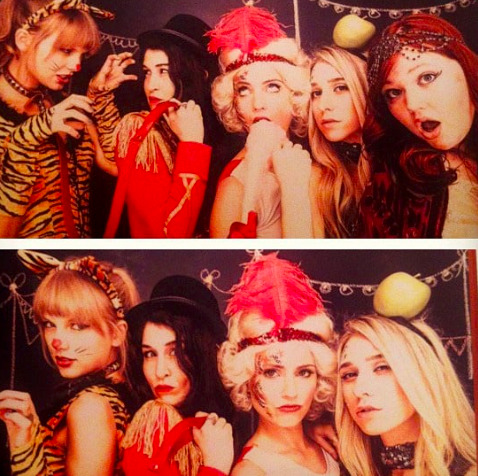
tbh im not totally sold on this - most because it seems more recent with lyrics like, “In my defense, I have none for never leaving well enough alone” sounds like a reference to ME! and “Roaring twenties” sounds like a reference to something that happened this year (2020). Also “throwing pennies in the pool” could be a reference to throwing Penni (Karlie’s agent) in the pool. Finally, Route 1 is the road along California’s coast, where Tay & Karlie drove on their legendary road trip...this makes my lil Kaylor heart worry.
2. Cardigan
This is the first installment in the Teenage Trio, which also includes August and Betty, and is told from the perspective of Betty. It’s about feeling so loved by someone but then being betrayed by them (”Chase two girls [Betty + August’s narrator] lose one”). The line ”And you'd be standin' in my front porch light” foreshadows to James professing love in “Betty”. Potentially Taylor is Betty - but I’m still thinking about that theory.
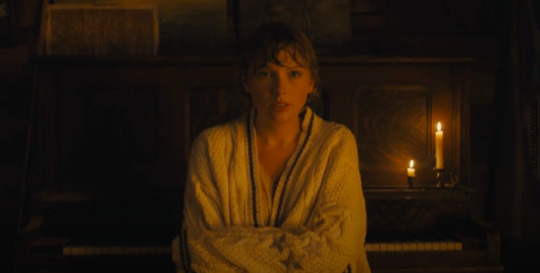
3."The Last Great American Dynasty"
We <3 a Rhode Island throwback. Here Taylor tells the story of her house in Rhode Island that Rebekah “Betty” (??!?!??!! more on that later) Harkness used to live in. Rebekah married an heir to Standard Oil which made her one of the wealthiest women in the USA at the time. She was also known for making a scene (”She had a marvelous time ruining everything”). Additionally, she founded the Harkness Ballet (”And blew through the money on the boys and the ballet”). After Rebekah’s death Taylor purchased the house and it is now best known as the place of many epic 4th of July parties.

4. Exile
Such a sad song! This is a duet between Taylor and Bon Iver, telling the story of a failed relationship that they have tried to mend many many times. Interestingly, this is also about a love triangle (like the teenage trio) - "I can see you starin' honey/Like he's just your understudy." This line specifically feels like it could be about bearding, and seeing someone else with the person you love, but feeling like - or knowing - it’s fake. “You were my town Now I'm in exile seein' you out” references and end to the relationship Taylor discussed in False God “Staring out the window like I'm not your favorite town I'm New York City”. To me this indicates that it is about Karlie and them breaking up or going through a rough patch - continually trying to fix things - and eventually being unsure that it could ever be repaired.
5."My Tears Ricochet"
This is pretty clearly about Scott & Scooter - “And if I'm dead to you, why are you at the wake? Cursing my name, wishing I stayed” and “You had to kill me, but it killed you just the same” seem to be a reference to them trying to exploit her work and how her leaving Big Machine really ruined the business - plus there’s some LWYMMD imagery. “You wear the same jewels that I gave you as you bury me” also seems to be a clear reference for trying to use Taylor’s own work against her, taking the profits, and pushing her out of the deal. As if we needed more evidence “You hear my stolen lullabies” clearly references her stolen masters.
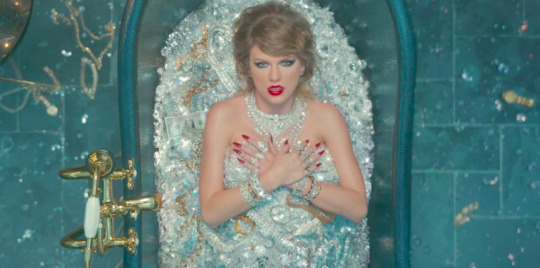
6."Mirrorball"
Big 80s prom vibes from this song. Mirrorball is about being famous and all of her work - her most personal thoughts and dreams - just becoming different ways for other people to see themselves once she releases her music into the world. Part of being an artist is knowing that your work will reflect more of who the viewer is than who you are yourself. Here she uses the metaphor of a disco ball to explore that idea, and worries that she is losing her own identity through it “I'm still trying everything to keep you looking at me”. She also alludes to her fears that she will age out of relevancy “I know they said the end is near”, something she discussed in her documentary Miss Americana. Obviously this is internalized misogyny because we love Taylor and will listen to her music always and do not subscribe to the belief that women need to be young to be relevant because if they were a man then they'd be the man, and tay’s the man <3
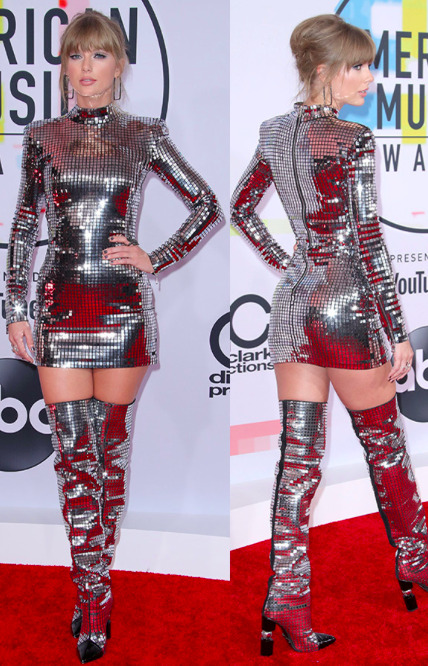
7. “Seven”
Personally, this is one of my favorite songs on the album. It’s so sweet and pure and lovely. This is about young love, with imagery of summer, toys, and child’s dreams to runaway together. Many people have speculated that it is about the same girl that the two unreleased Taylor songs “Sweet Tea and Gods Graces” and “Me & Britney” are about.
[Side note: initially I wondered if Me & Britney was about Britany Maack, Taylor’s long time friend who recently got married, but the names are spelled differently. Also the line in Seven “I can’t recall your face” indicates that this is about someone who Taylor is not currently in touch with.]
Both M&B and STAAG seem to be about the Seven relationship because there are general parallels with outdoor scenery, childlike wonder, and ( in the case of STAGG) sweet tea. Also all three songs indicate a gay relationship: STAGG - “And you can love like a sinner and lose like a winner”, M&B - “That boy she went ran off with, well, I thought he was crazy. Maybe I was just jealous that he'd come between me and Britney”, and Seven - “You won't have to cry or hide in the closet And just like a folk song our love will be passed on”.
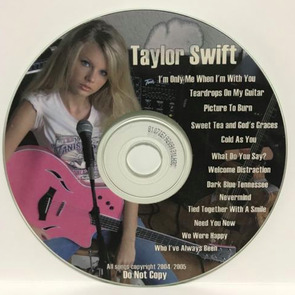
8. “August”
This is the second installment in the Teenage Trio, told from the perspective of the “other woman” who James meets while on summer vacation. The other woman (she doesn’t seem to have a name...unless it is August...which it could be? idk) is in love, but realizes that James isn’t in love with her - “Will you call when you're back at school? I remember thinkin' I had you”. The line “Remember when I pulled up and said "Get in the car" references the same incident which is retold in Betty, but this time with James telling Betty it was just a summer fling that didn’t mean anything.
9. This Is Me Trying
Here we have a break up song, about Taylor trying to win her lover back and feeling completely lost without them, unable to concentrate or be around people, and turning to self sabotage. It’s about the general loneliness that one feels when they’ve lost someone they truly love, and the miscommunication that can happen in a relationship when you’re not understanding each other or receiving love in the same way (hence the song’s title). I think this could be about Karlie, it seems clear that their relationship has not been smooth and that they have had many on-and-off times. It could also be serving a purpose of building the Joe break up narrative, but only time will tell for that.
10. “Illicit Affairs”
Taylor loves her secret love - this song reads like a sad version of “I Know Places”. It seems clear that this is about Karlie Kloss. “Tell your friends you're out for a run” is one of my favorite lines because Karlie started Klossy run club, where you commit to running a certain distance in a month - and she posts about it on instagram CONSTANTLY. But overall, the song details a relationship of a woman being with someone she doesn’t love (kushnerd) and sneaking around to meet up with the person she does love (tay!). The line “Tell yourself you can always stop” is so sad to me, the idea that Karlie got into this and keeps telling herself that it will only be a little longer and she can leave when she wants, but staying in her fake marriage anyway.

11. Invisible String
This is pretty much the only pure love song on the album - about feeling connected to someone throughout your whole life, knowing that that somebody is out there, and then finally finding them. Taylor talks about being in Centennial Park in Nashville as a teen, and then eventually showing her lover around. The song is really self referential, with lots of easter eggs for her past work, including Bad Blood and Delicate. She also references Joe Jonas with the line “Cold was the steel of my axe to grind For the boys who broke my heart Now I send their babies presents”.
Some people have pointed out that there is a similar idea presented in Jane Eyre - when the protagonist says to her love interest “I have a strange feeling with regard to you. As if I had a string somewhere under my left ribs, tightly knotted to a similar string in you."
12."Mad Woman"
Another Scooter one - “It's obvious that wanting me dead has really brought you two together”. “The master of spin” is word play referencing the masters records scandal. “Watching you climb over people like me” points out that agents and labels are making money off the performers they find and pushing them around. There’s also a reference to Scooter’s wife Yael and how he cheats all the time, but she doesn’t do anything likely because of her own internalized misogyny - “has a couple side flings. Good wives always know. She should be mad, should be scathing like me”.
13. “Epiphany”
The first verse of this touching ballad is about Taylor’s grandfather in WW2, storming the beaches at Normandy - “Crawling up the beaches now "Sir, I think he's bleeding out"”. The second verse is about a nurse helping patients with Covid-19 - “Holds your hand through plastic now "Doc, I think she's crashing out"”. The bridge here talks about wishing there was some great epiphany, some magical solution for the suffering in the world. The chorus refers to experiencing trauma with others and staying loyal even in the hardest times, even if it means literally dying. Although this seems like a departure from the themes of rest of the album, the whole album examines loyalty and considering what you would do for the people you love - so I really don’t think it’s a departure at all.
14. “Betty”
Obviously this is the gayest song on the album and an early fan favorite. It is the final song in the teenage trio, told from the point of view of James, going to win Betty back after betraying her and sleeping with someone else (August!?) over the summer. The line "Will you kiss me on the porch in front of all your stupid friends?”, a line that is very clearly about wanting to kiss a woman, is especially striking (& gay!) when sung by Taylor. The clearest version of this plot is someone begging for forgiveness after betraying the person they love.
There is also a bit of a nod to a line in “Picture to Burn”, a break up song off Taylor’s first album. In PTB Taylor says “So go and tell your friends that I'm obsessive and crazy that's fine, I’ll tell mine you’re gay”. This lyric has since been changed in versions available online, but on the original album that's what it was. This is interesting because she’s calling attention to knowing that someone is gay and hasn’t told their friends...which you would definitely know if you had dated them.
The names “James” and “Inez” are both mentioned in the song, which are the names of Blake Lively and Ryan Reynold’s daughters. James was already featured on a Taylor Swift album, as the lil baby voice at the beginning of “Gorgeous”. Worth noting that “James” is traditional a male name, but that this character is named after a female.
ALSO I have this theory I’m working on that Taylor is Betty and this whole album is in the same world with the same people, but WILL POST MORE ON THIS LATER.
15."Peace"
Ok - this is Archer 2.0 for me, about how she is worried about how no one will ever love her or stay with her because its too much work - “the rain is always gonna come if you're standin' with me” and “No, I could never give you peace” are pretty telling lines about her concerns that people will think it is not worth it to be friends with or in a relationship with her due to all of the baggage that comes with it.
The opening lines - “Our coming-of-age has come and gone Suddenly this summer, it's clear” feed into my emerging theory that all of these songs exist in the same universe and are about the same three characters...but I’m still figuring that one out. The line “And you know that I'd swing with you for the fences Sit with you in the trenches” reference Seven and Epiphany, respectively - further supporting that all of these songs are in the same world.
16. “Hoax”
Out of all of the songs that make my little Kaylor heart ache - this is the most heartbreaking. Specifically the line “My eclipsed sun” refers to Karlie, who Taylor has called “sunshine” on multiple occasions, and her light being covered up by her contract with Kushnerd and Scooter. The line “Don't want no other shade of blue But you” makes it clear that this song is in reference to the muse for the album “Lover” - aka Karlie.
However, this is a song about betrayal and completely trusting someone, only to find that they stabbed you in the back, as is clear by the line ”Your faithless love's the only hoax I believe in”.
Additionally, the line“You knew it still hurts underneath my scars” seems to again feed into the idea that all of the songs on the album involve the same characters. This one is a bit more clear, it seems that - if this theory is correct - Betty is the narrator of this song, as she referenced her scars before “Drew stars around my scars” in Cardigan.
OK- I'm going to go deep into song by song later, but I just wanted to get something out there!!! Also def interested in hearing what everyone else thinks!
EDIT: I just found some lyrics from The Lakes in an article from Billboard. I wanted to add them in even though we don’t have the full song because I felt like we really ended on a sad note with hoax and then when I saw these I was like there is hope!!
SO the lyric Billboard included in their review was “A red rose grew up out of ice frozen ground / With no one around to tweet it” which is a continuation from the line from “Hoax” - “ This has frozen my ground”. What I’m taking from this is that in the final song Taylor finds hope <3
165 notes
·
View notes
Text
How have Society’s Views on Body Images Changed over the Years?
(Before I get into it, this is an essay I wrote for my college class surrounding the effects of social media. For my project, I decided to talk about something that has affected me in the past. Personally, social media has changed the way I view my own and other’s bodies. I used to compare myself to everyone I saw, but over time, I have learned that media can make everyone’s life look like a dream. I am very happy with my body, and I know that social media helped me a lot along the way of self-acceptance. This essay is very long (8 pages on Google Docs!) but I believe my research to be very interesting, and I hope you do too. TW for mentions of eating disorders.)
Body images have been affecting women around the world since 3,500 years ago. Women tried to perfect their image for the time period they lived, whether it be the image focusing on large, fertile women during Prehistoric times, the curved hips of the later 1900s, or the dangerously skinny body the 21st century now depends on. In modern society, there is nothing that matters more to young adolescent girls than their body image. Citizens see the ideal sizes in ads in public transportation, Barbie dolls, and in social media. The archetypal body has been attempted by many women. Many turn to eating disorders such as anorexia nervosa or bulimia to achieve this ideal schema. Society is beginning to realize that all sizes are beautiful and women shouldn’t feel pressured to fit into these standards. Over the past hundred years, society’s views on women’s bodies have shifted from favoring those who have bigger bone structures to having dangerously low BMIs. These unrealistic expectations have led to many girls struggling to find peace with their body, and have made society fail to see its beauty.
Since Ancient Egypt, women have attempted to obtain the ideal body images of their times. Although their ideal image is drastically different from what humans today strive towards, the notion of struggling to fit in with society stayed the same. Before the 1900s, the concept of body images was easily demonstrated in the artwork from the past, such as in the Prehistoric times, for example. Cichon-Hollander analyzed the Venus of Willendorf, a famous sculpture dug up by Joseph Szombathy. In this artwork, he saw a rather plump-looking woman. The woman had a round stomach, was disproportionate, and had an emphasis on her reproductive organs. Hollander also examined Egyptian artwork that portrayed a new fashion sense and body image that wasn’t seen before in Egypt. These women wore dresses and jewelry to accentuate their petite bodies. Ancient Greece put a large emphasis on a proportionate and symmetrical body. This ideal beauty was based on the mathematical basis of the parts adding up equally to the whole (Cichon-Hollander). In the Late Middle Ages, women were once again bearing large stomachs that almost made it look like every woman at the time was pregnant. Even though they had big stomachs, the rest of their bodies remained slim. The rest of the women had petite legs and a slim, curved figure (Cichon-Hollander). Many of these ideas stray from the expectations of women’s bodies today. While the Prehistoric times preferred larger women, we now see bigger women and make fun of and pity them. In Ancient Egypt, most of the women also had their heads shaved. Today, most women have long, healthy hair, as being bald is seen as too masculine to many people. Ancient Greece’s ideals have greatly influenced what we admire today. We enjoy looking at those with symmetrical faces and bodies, just like the Greeks did. We believe those with asymmetrical bodies look awkward and uncomfortable. The Late Middle Ages emphasized women with large stomachs, and now we have fitness programs and unique diets to receive a flat stomach. Even though all of these beauty standards are unique to their culture and time period, they all still were ideals that women would struggle to meet. The need to fit in outranks many women’s attempts to be satisfied in their own bodies, even over three thousand years ago.
After the 1900s, women focused heavily on slim bodies and having the perfect shape. In the 1910s, women had a figure-eight body with a cinched corset. Ideal women were known as Golden Girls and were tall, regal, and mysterious. When the next time period came along, it called for fewer curves and more legs. The switch from the 1910s’ tall, mysterious girl to the flappers of the Roaring Twenties examined extreme weight loss and the dependence on corsets. Flappers were constantly in motion in their shiny small dresses. During this time, the Miss America pageant was made, and Margaret Gorman was crowned the first Miss America in 1921 (Hart). The Thirties called for the return of the waist and the fashion was tailored to accentuate their new curves. However, it still kept the skinniness in the stomach and legs. The later 1900s’ were when women really began to have negative feelings towards their bodies. Models and superstars’ skinny yet still curvy bodies were emulated by the women in America. The 1950s’ hourglass look called for curvy and rounded figures while keeping a skinny stomach. Most women would take supplements to fill out their curves. Marilyn Monroe was the woman most girls strived to become (Martin). She flaunted her curvy yet petite body to citizens. Throughout the Sixties, women considered thin back in. These girls were doll-faced, slender, and petite. Models like Twiggy showed women their beauty and made them envious. Around this time, girls and women alike began to hate their bodies more than ever before; feeling ugly because they didn’t have the exact body shape of their favorite models. Models in the 1980s’ felt the pressure of the beauty industry to preserve their body image in any way they could. Between 1960 and 1980, there were decreases in model’s weight and hip size, and an increase in their height, waist size, and bust size in Miss America pageants and Playboy centerfolds (Swami). Models from their specific time period felt the effects of society’s pressure to have the best body. In an article that examines the changes in body image through the 1900s’, Maria Hart found that most of the decades held something in common: toned legs and stomachs. The 21st century still values these things in society today. The history of idealized body images continues to repeat itself.
These unrealistic expectations for the perfect body image have been influenced heavily by our society and are extremely harmful to those determined to follow it. Citizens are introduced to striking bodily expectations everywhere you look and can be determined even by children. Young girls are introduced to impractical body images through the use of Barbies and other dolls. Picture the stereotypical Barbie doll; she has long legs, white teeth, a flat stomach, and curves in all the right places. Barbies were one of the first American dolls modeled with the teenage fashion, making the dolls a large visual attraction (Martin). As young children play with these dolls, they begin to see the idealized body image they believe they will have once they grow up. However, many of these kids will be devastated when their stomach isn’t as flat as their friends or their teeth grew back in crooked and now need braces. As these same girls grow to be adolescents, they will begin looking for new things to do, like watching television shows displaying the perfect body, and examining their favorite pop stars and models on the cover of magazines. Teenage girls reading fashion magazines are introduced to mass media’s perception of the body. Those that look up to models are also exposed to slim bodies and symmetrical faces that they may try to achieve. Americans are also able to look at models on their TV sets now, watching them attend large, extravagant parties while wearing a pair of $10,000 shoes. Streaming TV has been associated with dissatisfaction in body image for many Americans (Martin). Teenagers are going through a lot of bodily changes, which makes it hard for most of them to accept their bodies for how they are. Social media is the biggest source of adolescents examining body images. They look at photoshopped photos without realizing it’s not actually how their role models look. Some apps give people the ability to alter how they look by whitening their teeth and taking away blemishes. This gives teen unrealistic views from the people they’re following and will make them have self-doubt. What they don’t realize is that the person may have put on loads of makeup and editing tools to achieve their look (Makwana). Women obsess over getting enough likes or views on their social media platform, stating it makes them feel pretty, liked, and validated. Young girls, in particular, admit to feeling as if they lived through social media and not their real life. The results of being introduced to negative body images can greatly impact a woman’s confidence and optimism.
The perfect body is not achievable for most body types, which leads these expectations to be very harmful to society. There are many statistics that show terrifying results of young girls failing to see the beauty in themselves and their peers. Dove, a company that makes beauty and hair care, made a survey about body image in young girls and women. Their results came in and shocked many people. 42% of girls in first through third grade want to become skinnier, 81% of girls aged 10 are scared of becoming fat, and 2% of women of all ages would describe themselves as beautiful (Martin). It had been known that most girls have a negative view of their own bodies, but many failed to realize how early on girls began to start obsessing about their bodies. In a different survey by the Girl Scouts, 66% of girls were actively trying to lose weight, 33% had distorted views of their bodies, and 59% of girls are not satisfied with their bodies (Martin). Other surveys all state around the general lines that young girls already have an image in their head on what their body should look like, and how it differs from the one they have now. These ideas of how the body should look can lead to women turning to diets, working out, and other, much unhealthier methods to achieve their perfect body. Eating disorders are very common among women trying to achieve their idealized body image, especially models. Over the years, Miss America’s BMI has decreased over the years getting all the way to an astonishing 16.9. Many of the contestants had dangerously low BMIs that put their health at risk. The average body mass index for the average person is between 18.5 and 25.0. For women, the average is between 21.3 and 22.1 (Martin). 2008 Miss America winner Kirsten Haglund had a BMI of 16.29, which is severely low for a woman of her age. Haglund stated she was a recovering anorexic and used it to her advantage. She began using her platform to speak out on the dangers of eating disorders and how to help those who may be struggling. Haglund wasn’t the only person in the modeling industry to realize the dangers of maintaining the small body image; a fashion show in Madrid felt the effects of the harsh realities of keeping a slim body when many young models died from these expectations. In 2006, the fashion week in Spain banned models who looked dangerously skinny to try and preserve their health. The ban came after the model Luisel Ramos died of a heart attack right before stepping on the catwalk. Her body mass index was a startling 14.5. A little while after the death of Ramos, 21-year-old Ana Carolina Reston died with a BMI of 13.4 (Martin). Models in Madrid are now required to be examined by a doctor and will not be allowed to model in fashion week if they have a BMI lower than 18. Those thinking about joining the modeling industry should examine not only how their body feels, but also how their minds feel. Having a thigh gap is not nearly as important as being in good health, but society makes women pick and choose which one they will have. Unfortunately, most pick looking skinny. To try and avoid negative body images from the beginning, parents should try and take more time to examine the content they give their children to make sure they are getting a representation of not only the perfect body image, but of all body types in between. Parents should also look out for their children obsessing over what they eat and urge them to maintain a healthy lifestyle. If there is someone who seems to be struggling with their body image, people should try and help them in any way possible. This doesn’t mean they have to be the one to talk to them; they could turn to a trusted adult, like a parent or teacher. If that isn’t enough, the professional help of a psychologist or doctor may be for the best. By helping those in need, citizens make it known that they can and will all struggle together as a society, just as they will also bring each other up as a society.
The ideal body image of today is nothing like the one we earlier examined of the Prehistoric times, just like how today’s bodies may be nothing like those in a hundred years, or a thousand years. What will stay the same is women’s determination to maintain that body to fit in with their society. Unless someone takes the first stand and becomes confident with not fitting in the conformities our society holds, nothing will ever change. When women begin to embrace their bodies, they will be able to bring about great change. Already today there are women spreading the word on eating disorders and other mental health issues. Imagine what could happen if models weren’t just skinny if ads depicted larger women if people raised each other up instead of watching everyone fall. America has made drastic improvements, but who knows if it will be enough for future daughters and their daughters to love their bodies. If a person feels confident in their body, their body image is the one to envy; the image of someone who loves themselves and the skin they’re in.
Works Cited
Cichon-Hollander, G.W. “The European Ideal Beauty of the Human Body in Art.” Art History Archive, http://www.arthistoryarchive.com/arthistory/european/European-Ideal-Beauty- of-the-Human-Body-in-Art.html. Accessed 20 May 2019.
Hart, Maria. “See How Much the ‘Perfect’ Female Body Has Changed in 100 Years (It’s Crazy).” Greatist, 15 January 2015, https://greatist.com/grow/100-years-womens-body- image. Accessed 15 May 2019.
Makwana et al. “Magazine Issue 1 2018/Issue 35.” The Inquisitive Mind, http://www.in-mind. org/article/selfie-esteem-the-relationship-between-body-dissatisfaction-and-social-media-in-adolescent?gclid=CjwKCAjw8e7mBRBsEiwAPVxxiO4oDiD9acCaInp4RJHmglfodOjJIIM1HDmz6I0z02FUwu0es-1a_RoCOpQQAvD_B. Accessed 16 May 2019.
Martin, Jeanne B. “The Developmental of Ideal Body Image Perceptions in the United States.” Semantics Scholar, https://pdfs.semanticscholar.org/9baf/87fa41962e3454b6365c 2900f9202fb896ae.pdf. Accessed 17 May 2019.
Swami, Viren. “Women’s Idealised Bodies Have Changed Dramatically Over Time-But Are Standards Becoming More Unattainable?” The Conversation, https://theconversation. com/womens-idealised-bodies-have-changed-dramatically-over-time-but-are-standards-becoming-more-unattainable-64936. Accessed 15 May 2019.
1 note
·
View note